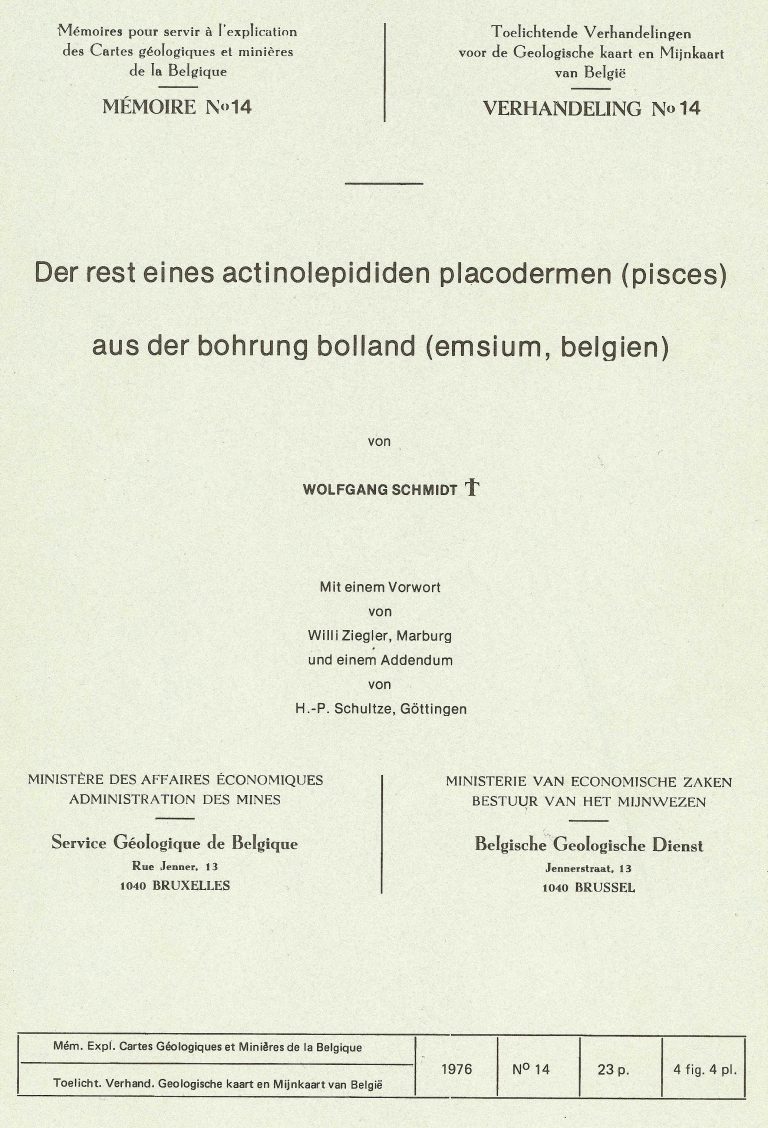
Publication details:
The printed version of the Memoirs Vol. 14 is available for sale at the GSB. For ordering, please contact gsb@naturalsciences.be
A small arctolepidid arthrodire of the subfamily Actinolepidinae is described from the Lower Emsium of the drilling Bolland near Liège/Belgium. The new genus resembles most Actinolepis but differs from .that genus and other Actinolepidinae in the shape of the postorbitals and the antero-ventrals. The body behind the trunk armour is preserved onto the tip of the tapering caudal fin. The caudal region resembles that in ptyctodontid and petalichthyid placoderms.
Un petit arctolepidide arthrodire de la sous-famille Actinolepidinae est décrit. Il a été découvert dans les roches de l’Emsien inférieur du sondage de Bolland près de Liège (Belgique). Le nouveau genre s’approche fort d’Actinolepis, mais il se distingue de ce genre et des autres Actinolepidinae par la forme des postorbitales et des antéroventrales. La partie postérieure du corps est préservée jusqu’à la fin du fouet de la nageoire caudale. La région caudale ressemble à celle des Ptyctodontida et Petalichthyida.
Aus dem Unter-Emsium der Bohrung Bolland bei Lüttich/Belgien ist ein kleiner arctolepidider Arthrodire der Unterfamilie Actinolepidinae beschrieben. Die neue Gattung steht Actinolepis am nächsten, unterscheidet sich aber von dieser Gattung und den übrigen Actinolepidinae in der Form der Postorbitalia und Antero-Ventralia. Neben Kopf- und Rumpf-Panzer ist der Körperabschnitt hinter dem Rumpf-Panzer bis zur peitschenförmig auslaufenden Schwanzspitze erhalten. Der Schwanz gleicht dem ptyctodontider und petalichthyider PIacodermen.